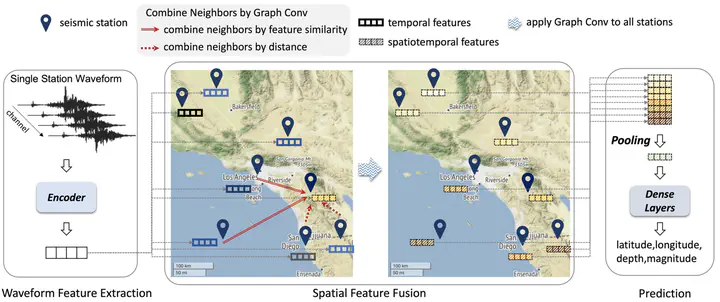 STGNN
STGNN
Abstract
Accurate earthquake location and magnitude estimation play critical roles in seismology. Recent deep learning frameworks have produced encouraging results on various seismological tasks (e.g., earthquake detection, phase picking, seismic classification, and earthquake early warning). Many existing machine learning earthquake location methods utilize waveform information from a single station. However, multiple stations contain more complete information for earthquake source characterization. Inspired by recent successes in applying graph neural networks (GNNs) in graph-structured data, we develop a Spatiotemporal Graph Neural Network (STGNN) for estimating earthquake locations and magnitudes. Our graph neural network leverages geographical and waveform information from multiple stations to construct graphs automatically and dynamically by adaptive message passing based on graphs’ edges. Using a recent graph neural network and a fully convolutional neural network as baselines, we apply STGNN to earthquakes recorded by the Southern California Seismic Network from 2000 to 2019 and earthquakes collected in Oklahoma from 2014 to 2015. STGNN yields more accurate earthquake locations than those obtained by the baseline models and performs comparably in terms of depth and magnitude prediction, though the ability to predict depth and magnitude remains weak for all tested models. Our work demonstrates the potential of using GNNs and multiple stations for better automatic estimation of earthquake epicenters.